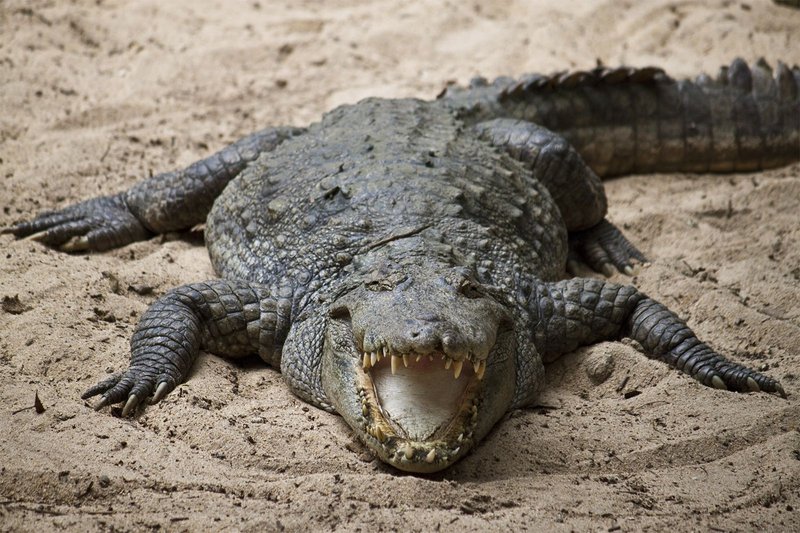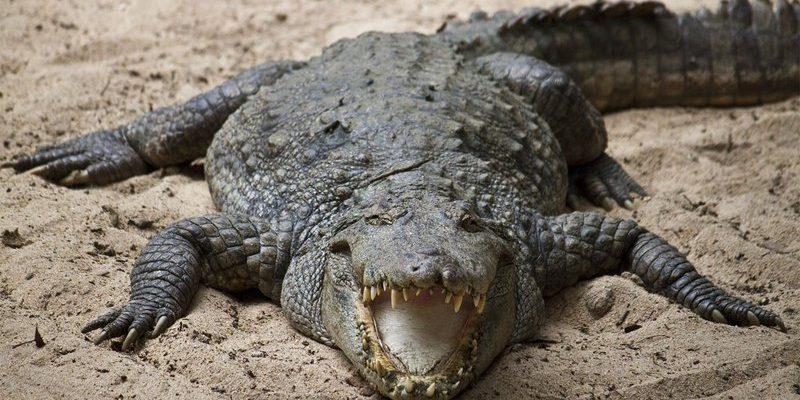
Crocodiles are opportunistic predators, which means they’ll take advantage of any meal that comes their way. Imagine them as the heavyweights of the animal kingdom, sometimes lurking just below the surface, waiting for an unsuspecting creature to wander too close. While they play a vital role in their ecosystems, their powerful jaws and stealthy ways can make them a significant threat to humans, especially in certain situations. So, let’s explore what makes crocodiles so formidable and what you should know for your safety.
The Basics of Crocodile Behavior
Crocodiles are fascinating, but understanding their behavior is crucial to grasping how they might interact with humans. Unlike other reptiles, they exhibit a level of intelligence that can catch most people off guard. They can learn to recognize their surroundings and even exhibit problem-solving skills.
Crocodiles are also territorial. If they feel threatened or if you unknowingly venture into their space, they can react aggressively. This defensive behavior is often what leads to attacks on humans. They’re not out to hunt you down like a movie monster, but they will defend their territory fiercely. So, when you’re near water bodies where crocodiles live, it’s essential to keep your distance—both for your safety and out of respect for these powerful animals.
Types of Crocodiles
There are several species of crocodiles, but the most notorious ones for human interactions include the Nile crocodile and the Saltwater crocodile. The Nile crocodile can be found in Africa and is known for its size and aggressive nature. They can reach lengths of up to 16 feet and weigh over a thousand pounds.
On the other hand, the Saltwater crocodile holds the title for the largest living reptile on Earth. They can grow over 23 feet long! Their ability to travel vast distances in the ocean makes them a potential threat wherever coastal waters are present. Knowing which species you might encounter can help you assess the risk factor if you find yourself near their habitats.
How Do Crocodiles Attack?
Crocodiles are expert ambush predators, meaning they rely on stealth to catch their prey. They usually lie in wait just below the water’s surface, camouflaged by their surroundings. When something—often mistaken for food—approaches, they strike with surprising speed.
The attack typically involves a rapid lunge from the water, where they grab their prey with strong jaws. Their bite is incredibly powerful; the pressure can exceed 2,000 pounds per square inch! After capturing their meal, they often employ a technique known as the “death roll.” This maneuver allows them to drag their prey underwater, making it difficult for escape. While this behavior is part of their natural hunting style, it’s also why human encounters can be so dangerous.
Recognizing Signs of Danger
So, how can you tell if you’re in a crocodile’s territory—or worse, if you’ve wandered too close? Here are some signs to watch for:
- Tracks: Look for large, clawed footprints near the water.
- Slides: Areas where mud or grass is disturbed indicate a crocodile has been sunbathing or moving in and out of the water.
- Sounds: Listen for low growls or hissing noises, especially at dusk or dawn when they’re most active.
If you see any of these signs, it’s best to keep your distance and avoid entering the water, as you’re likely in a crocodile’s hunting ground.
Precautions Around Crocodiles
Knowing you’re near crocodiles is just the first step; taking precautions is vital for staying safe. Here are some tips you should consider:
1. Avoid swimming in known crocodile habitats. If a sign clearly shows crocodiles are present, heed that warning.
2. Stay on designated paths when near rivers or lakes. Don’t wander off into the dense vegetation where crocodiles may be hiding.
3. Don’t feed them. Feeding crocodiles can encourage them to associate humans with food, increasing the risk of attacks.
If you find yourself fishing or boating in areas where crocodiles are known to live, be extra vigilant. Always keep an eye out for any signs of their presence, and ensure children stay at a safe distance from the water’s edge.
What to Do in Case of an Encounter
If you ever find yourself face-to-face with a crocodile, it’s essential to remain calm. Here’s what you should do:
– Back away slowly. Do not turn your back on the crocodile or run, as this may trigger a chase instinct.
– If the crocodile charges, try to put a barrier (like a tree or large rock) between you and the creature.
– In the rare event that you’re attacked, aim for their eyes or snout, as these are sensitive areas. Fight back aggressively.
Understanding Human-Crocodile Conflicts
Interestingly, crocodiles don’t typically seek out human prey. Most attacks happen when humans accidentally encroach on their territory or provoke them. Awareness is key.
In some regions, human populations are expanding into crocodile habitats, leading to increased encounters. This growing conflict highlights the importance of education and respect for wildlife. By understanding crocodile behavior and habitats, we can reduce the risks and live harmoniously with these magnificent reptiles.
Crocodiles are remarkable creatures, but they can indeed be dangerous to humans if we don’t respect their space. If you ever have the chance to observe them in their natural habitat, it’s best to keep your distance. By understanding their behavior and following safety precautions, we can enjoy the raw beauty of nature without putting ourselves at risk.
Ultimately, this relationship between humans and crocodiles is a delicate balance. We must learn to coexist peacefully. After all, education and awareness are our best tools for preventing dangerous encounters and ensuring that both humans and crocodiles can thrive. So, the next time you hear about crocodiles, remember—they’re not just fearsome predators; they’re an integral part of our planet’s ecosystem.

